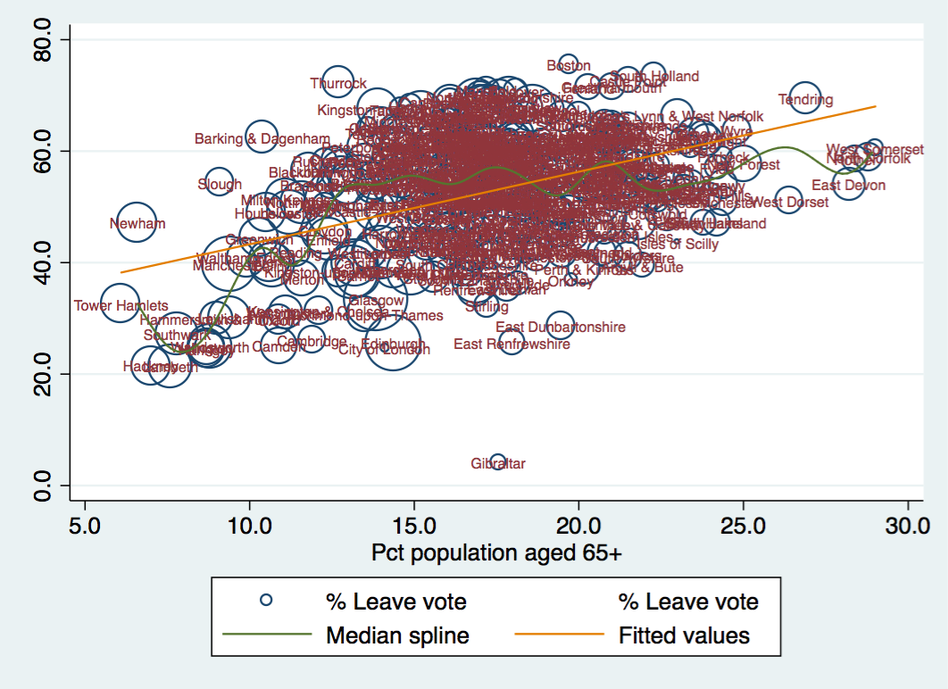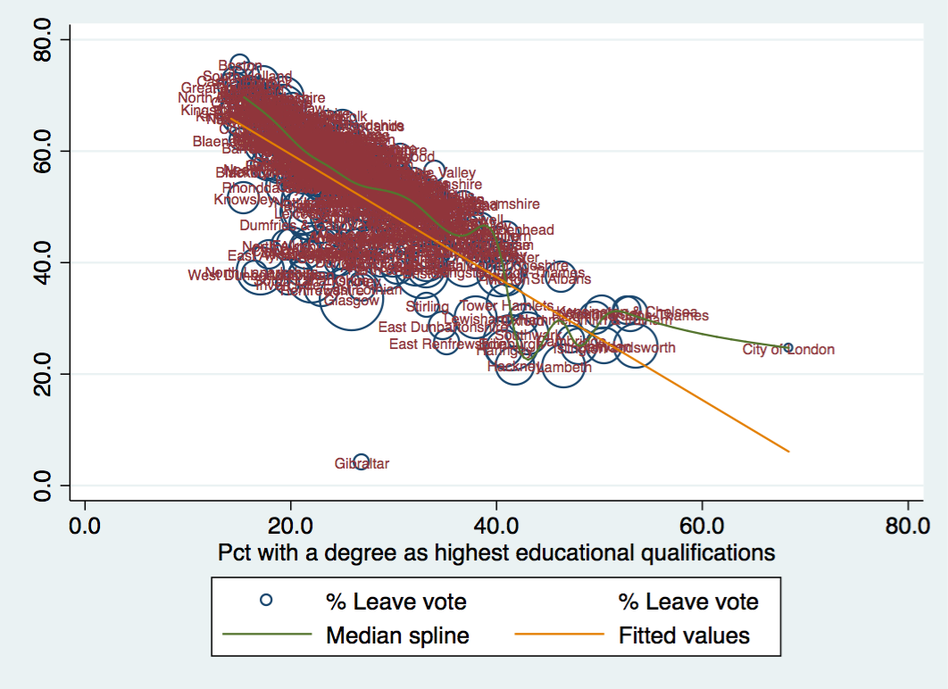It is not hard to see why Leave won. Evidence from numerous opinion polls showed that there was a clear majority for Leave on the basis of concerns about immigration and beliefs that leaving would reduce immigration. Moreover the same opinion polls showed us that there was no compensating majority who believed that the UK would be worse off if we left. Still less did people feel that they personally would be financially worse off. For further details see here.
Although it should not have come as a surprise that Leave won, the result was close enough that it could easily have gone the other way. There will be much debate as to whether the Remain side could have made their arguments more persuasively and campaigned more effectively. With such a close result a host of relatively small differences could all have made a difference. It will be hard for survey and other academic research to identify what, if anything was decisive.
Turnout, at 72%, was the highest for any UK-wide vote since 1992. Whilst this might constitute a relatively high level of participation by recent standards, it does still mean that 28% of registered voters did not bother to have their say in what, we were frequently told, was the most important national decision in our lifetimes. If opinion poll questions on likelihood of voting are at least roughly right, it is likely to transpire that non-voters more often favoured remaining. Moreover it is probably the case that if everyone eligible had voted then the UK would have chosen to Remain.
The local authority results provide some evidence that the divisions in society suggested by the opinion polls as important for referendum voting were born out. Places with more pensioners were more likely to vote for Leave.
The Remain vote was higher where there were more graduates.
These are geographical manifestations of primarily individual-level differences. There are also others related to ethnic diversity and economic prosperity.
The national divides are the most notable aspect of the political geography. Both Northern Ireland and Scotland voted Remain (at 56% and 62% respectively). Both England and Wales voted 53% Leave.
The only region within England to vote Remain was London, and it did so strongly with 60% of the vote. Setting aside London, the rest of England voted solidly, 55%, for Leave. While it is true that the Leave vote was strongest in the English countryside, many of the big cities voted Leave, including Birmingham, Sheffield, Bradford, Sunderland, Bolton, Newcastle, and Stoke. While the North and Midlands were stronger for Leave than the South of England, there were cities in the South, such as Plymouth, Southampton and Swindon, that voted Leave.
In the end only 52 out of 293 local authorities in England outside London voted to Remain. Similarly only 5 out of 22 Welsh council areas voted to Remain. Outside London, the preference for leave was widespread in England and Wales.
This post was originally published at Electionsetc.









